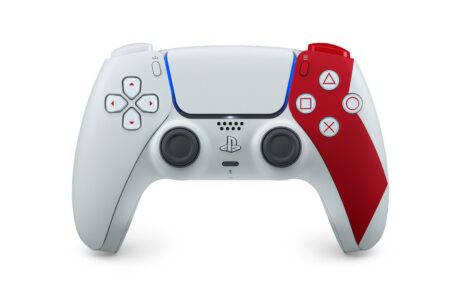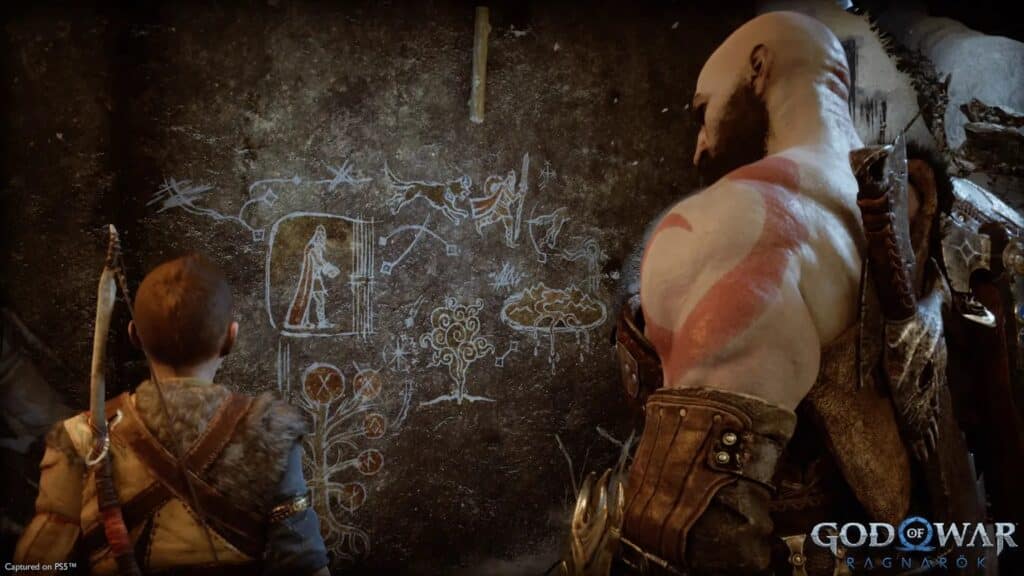After years of waiting and wishful thinking among PC gamers, the brooding wielder of the Chains of Olympus has found a new home with the release of God of War (2018) on PC. As a long-time God of War fan and converted console to pc gamer, seeing Sony bring such a beloved and console-selling franchise like God of War to PC was nothing short of a miracle.
While welcome, God of War’s jump to PC is a calculated move by Sony, whose end goal is to push more PS5s out the door. Part of that strategy is to port older titles with incoming PS5 exclusive sequels to the PC platform to build interest in the PlayStation brand within the now unavoidable PC audience. Horizon Zero Dawn, Days Gone, and Death Stranding all fall under the same umbrella as God of War, working towards Sony’s master plan.
Sony’s porting track record in recent years has been spotty. Death Stranding was released to massive acclaim for how buttery smooth it ran across a wide range of systems. On the other hand, Horizon Zero Dawn was released with a few warts that muddied up some of the good faith Sony was starting to build in this new market but since has been patched up to run remarkably well. To say that a lot is riding on this PC port is an understatement. This is one of the biggest games of all time, coming to the biggest gaming audience across all platforms.
2018’s God of War stands tall as a modern gaming classic, a masterclass in storytelling, game design, and graphical fidelity. A game worth dusting off the PS4 over just to experience those jaw-dropping moments that Sony has grown famous for in recent years. God of War Ragnarok looms over the horizon but before its arrival, let us see if the God of War’s PC port will join the pantheon of great ports or if this is a port that should be cast down to Hel, among swaths of lazy ports.
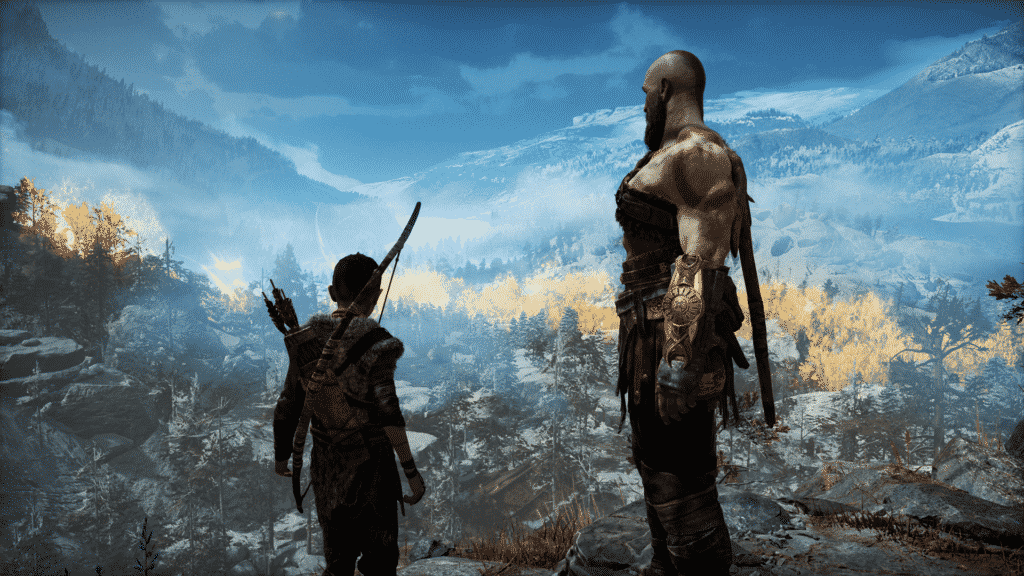
Old Warrior, New Tricks
With every PC release, there is an expectation among PC gamers for higher graphical fidelity and options to tailor the game experience for your own machines. This is, after all, a PC game now with PC standards.
God of War’s graphical options menu leaves something to be desired but isn’t as barebones as other recent ports like Final Fantasy VII Remake Intergrade and also features a few PC-specific tools that are much appreciated.
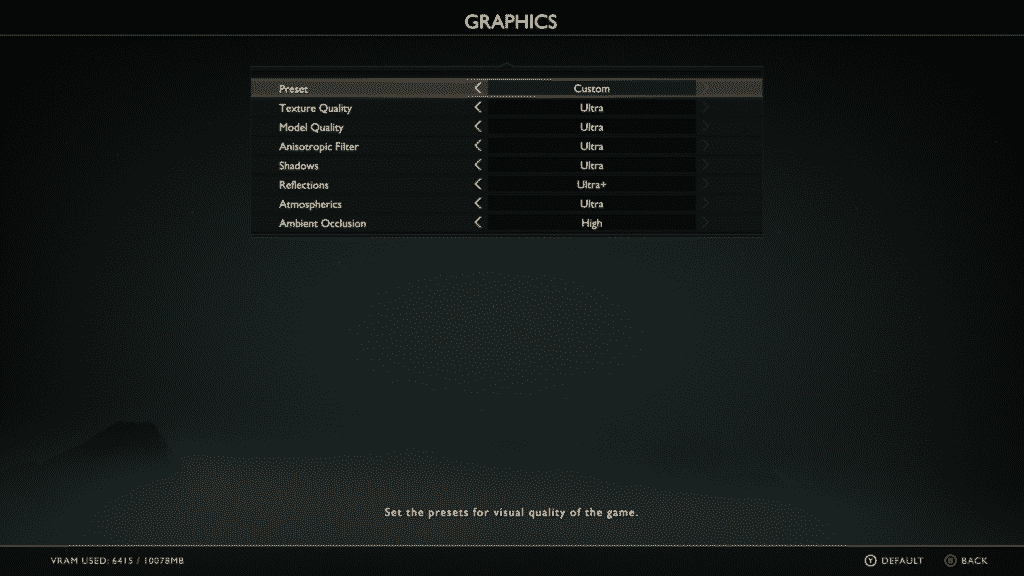
In the menus, you will find options for Texture Quality, Model Quality, Anisotropic Filtering, Shadows, Reflections, Atmospherics, and Ambient Occlusion. Each with values ranging from Low to Ultra. Reflections contain an Ultra+ value if you really want to make that PC sweat.
These graphical settings feel like they lack a few features such as dedicated anti-aliasing options, draw distance options, and certain settings that generally have independent options, like lighting and cloud quality, simply have been baked into the atmospherics settings. While lacking a few options, Sony’s chosen graphical adjustments for God of War fall in line with their recent porting efforts.
Notably missing is an option for a dedicated fullscreen mode, a growingly common trend among recent PC ports. Also absent is any form of benchmarking utility. Horizon Zero Dawn still stands as the only Sony port with a robust benchmarking tool for optimizing performance.
Lastly, for my fellow HDR enthusiasts out there, God of War on PC does feature a serviceable HDR mode, featuring values for brightness and contrast equal to the PlayStation version. Still, this HDR implementation pales compared to more comprehensive HDR menus as of late, such as Deathloop, which contained values for luminance, middle grey, brightness, and saturation.
Peak Performance
Despite lacking a few features that one would come to expect from a PC title, God of War manages to run admirably on PC. Thankfully, Sony Santa Monica has released a comprehensive system requirements sheet for God of War and has included an “Original Settings” graphical option to gauge where you can get an experience on par with the PS4 release or where you can crank up the graphics. Per Sony Santa Monica’s own system requirements sheet, an RTX 3080 should be able to run God of War at 4K 60 fps at ultra settings. These requirements hold true, mostly.
On my own RTX 3080 at 4K, the game runs at full ultra settings at a steady 60 fps, generally going between 57-60 fps in more intensive scenes. What bridges the performance gap to deliver a locked 60 fps across the board is Sony’s implementation of Nvidia’s DLSS 2.0 technology and AMD’s FSR upscaling. Setting DLSS to “Quality” renders the game at 1440p resolution with AI upscaling to 4K, smoothing out the frames at minimal visual cost. The occasional DLSS shimmer is present in motion, primarily across dense foliage and tree branches, but wasn’t too noticeable at higher resolutions. Upscaling from 720p to 4K regularly sees the game running into 100 fps territory.
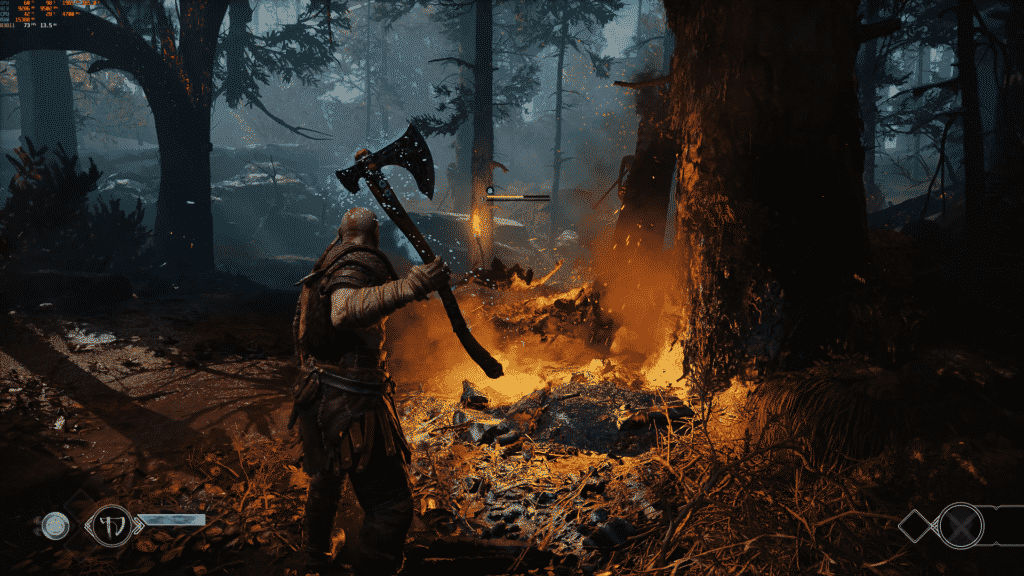
God of War runs well at the top end of current hardware, as it should, but what about on the lower end of the PC spectrum?
Sony states that an RX 570 should be capable of running God of War at 1080p 30 fps with the original console settings from the PS4 release. A 5600XT should run at 1080p 60 fps on high settings. Testing on an RX 580, which is a bump above the 570 and quite below a 5600XT, the card performed decently. The RX 580 hits 45-50 fps at 1080p with all settings set to high and 55-60 fps on the original settings during the opening hour.
AMD’s FSR technology bridges the performance gap and performs admirably. Scaling up from 832p to 1080p with FSR’s “Ultra Quality” setting, I was able to get God of War to run mainly in the high 50s on original settings while “Quality” mode delivers a mostly locked 60 fps experience.
FSR is an excellent solution for the non-Nvidia crowd but does create a more blurry-looking final image in motion. I recommend turning motion blur to a low value if using FSR.
Overall, God of War on PC performs well and should run decently with on-level graphics to the PS4 version across a myriad of PC configurations. Sony’s released system requirements hold true and decent care was put upon making this version as PC friendly as it can be.
The PC Difference
So, where does God of War on PC stand compared to the original PS4 version? Is this simply a port achieving parity with the console version or a truly enhanced version we have come to expect from a PC port?
As someone that spent hours ogling over God of War’s graphics on PS4, I can say that the PC version is a significant step up from the original release.
PC’s texture work is significantly higher quality, specifically on wooded structures and trees. Model quality is also greatly enhanced on PC. Kratos’ character model is noticeably more detailed upon close inspection. The ash on Kratos’ skin looks very defined, jumping off his cracked body more than before. The jump to native 4K on PC over the PS4’s checkerboard rendering brings out the finer details in God of War that you could have missed the first time. You’ll definitely be able to pick out some grey hairs in Kratos’ beard at 4K on PC.
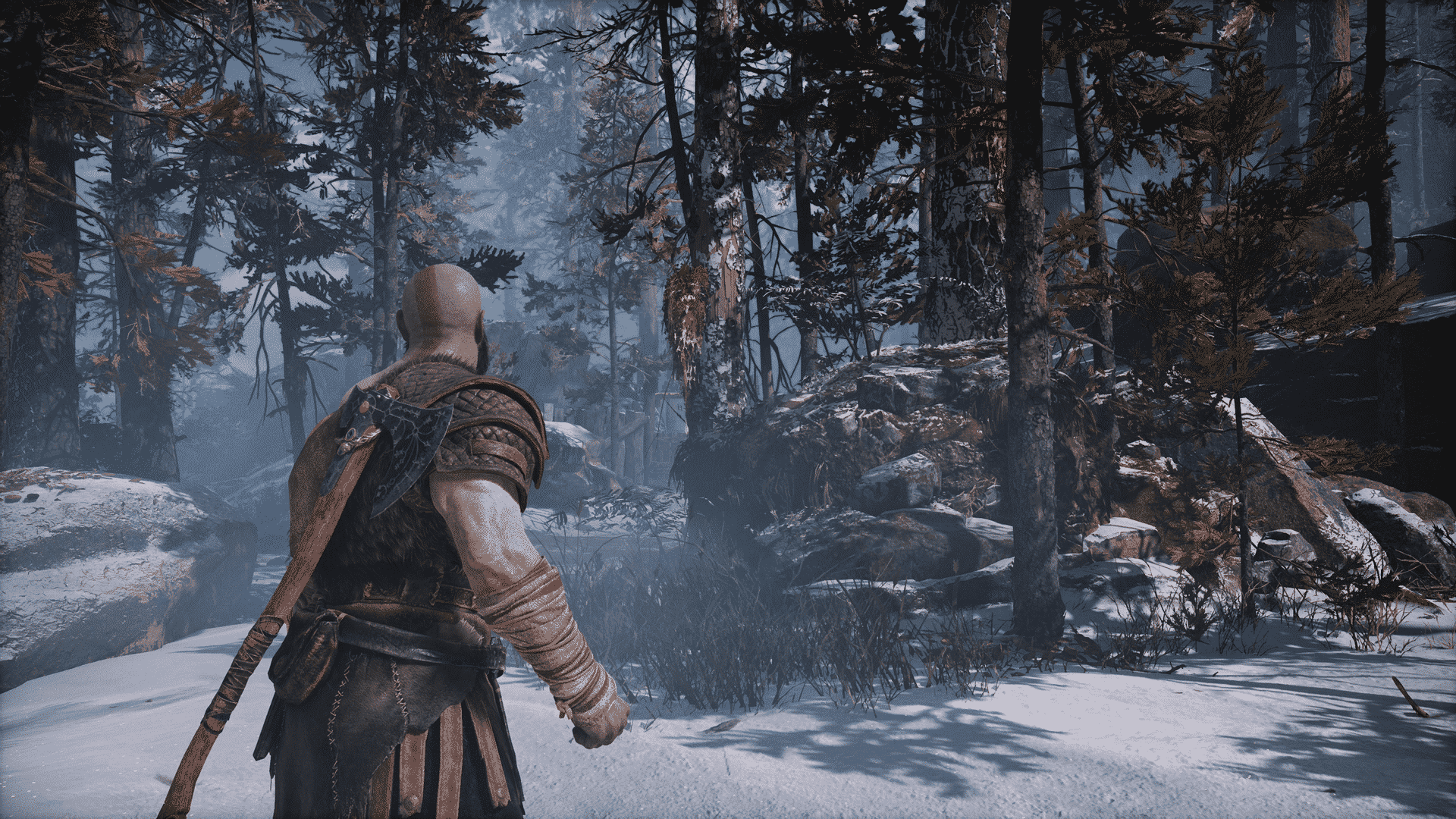
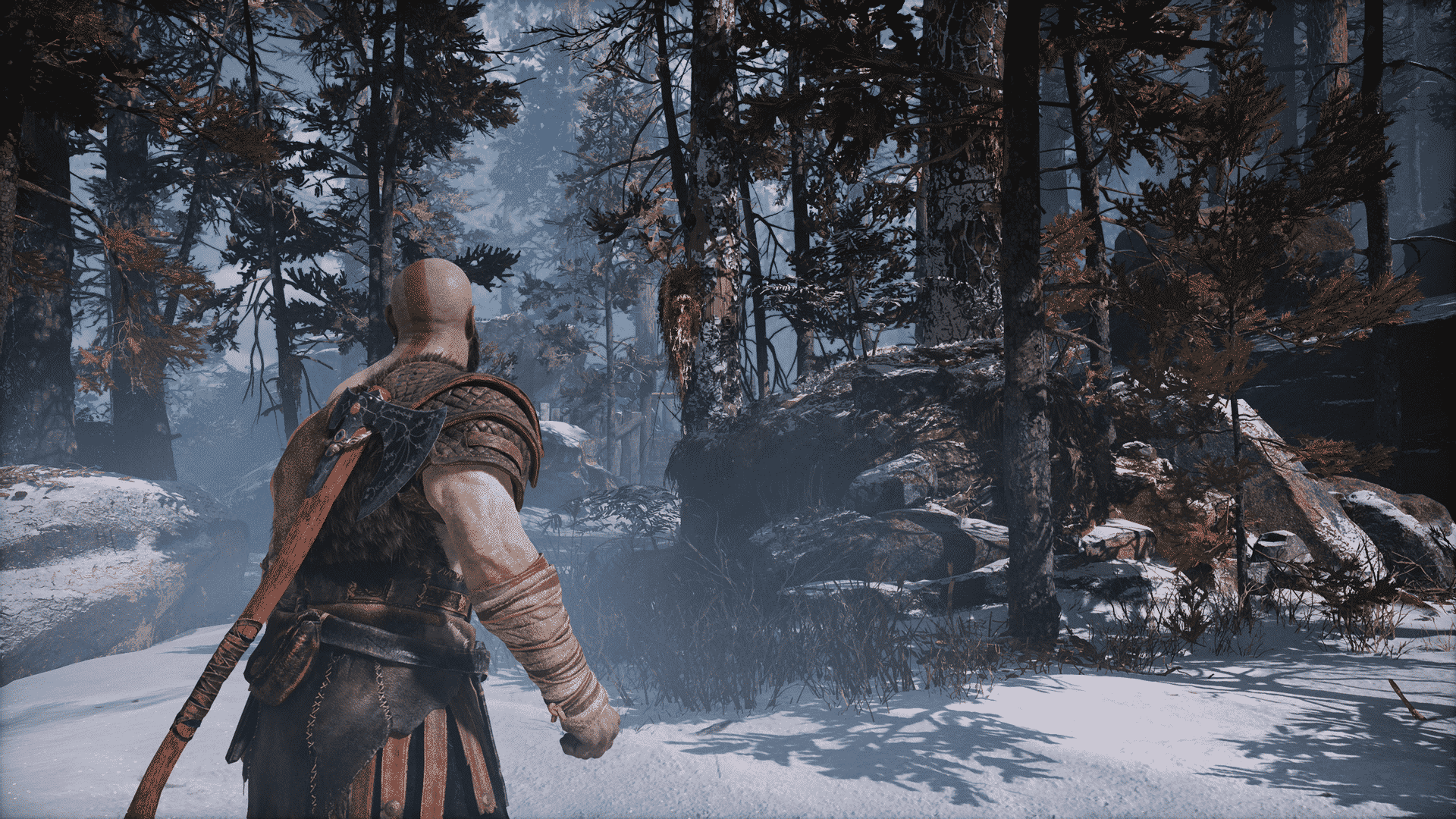
The most significant changes to God of War come from the enhanced atmospherics, shadows, and lighting, which compliment the new texture work beautifully and, in some cases, dramatically change the look of a scene.
Shadows in God of War are significantly sharper than its PS4 counterpart, even going as far as casting new shadows for finer parts of the foliage, adding further details to the scene. With atmospherics set to “Ultra,” fog is significantly thicker throughout the scene, and god rays have more volume to them as they shine down through the canopy.
Atmospherics also add increased particle density across the board. Scenes containing fire have significantly more sparks and floating ash than before, while combat-heavy instances have a more explosive look to them thanks to increased particle density.
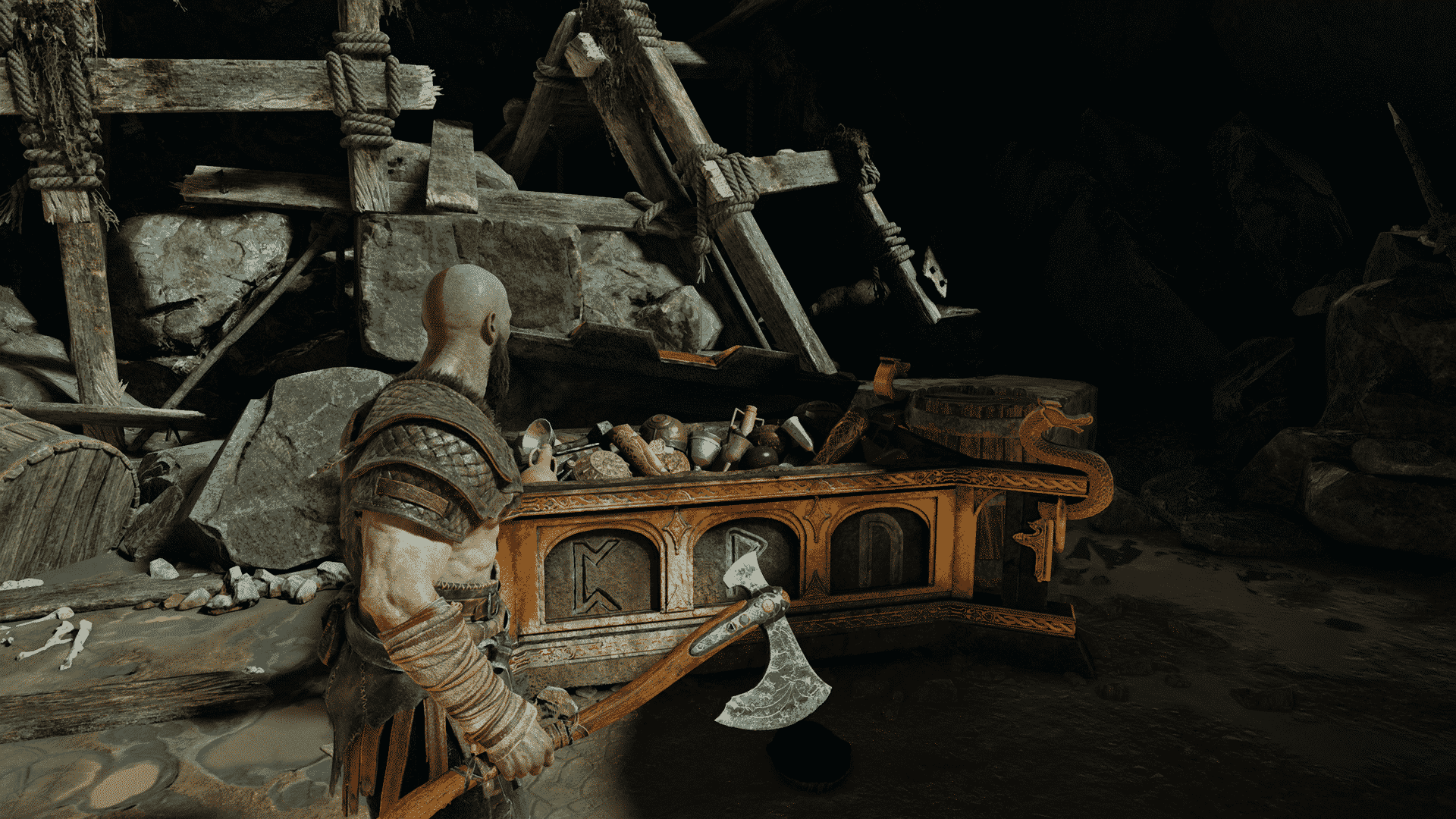

PC’s enhanced lighting work brings everything together to create a more captivating scene. Lighting in the PC version casts a broader glow, reflecting more accurately on surfaces and character models, enhancing the image across God of War’s shadowy and contrast-heavy environments.
Sony Santa Monica has also implemented some unique ambient occlusion techniques for this port. Implementing GTAO (ground truth ambient occlusion) along with SSDO (screen space directional ambient occlusion) to this version and, when coupled with the enhanced texture work, make scenes pop and contrast far more than in the base game.
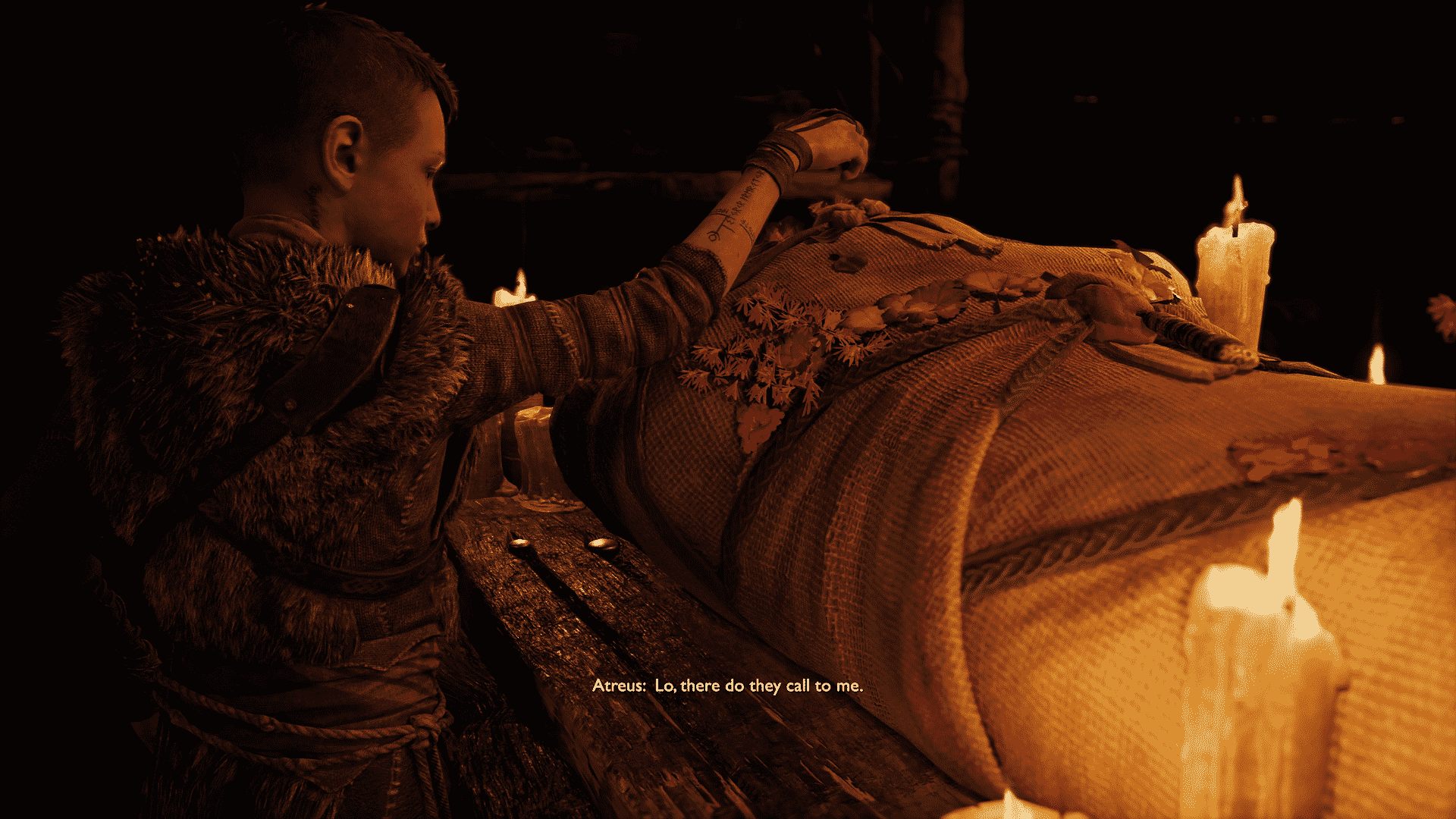
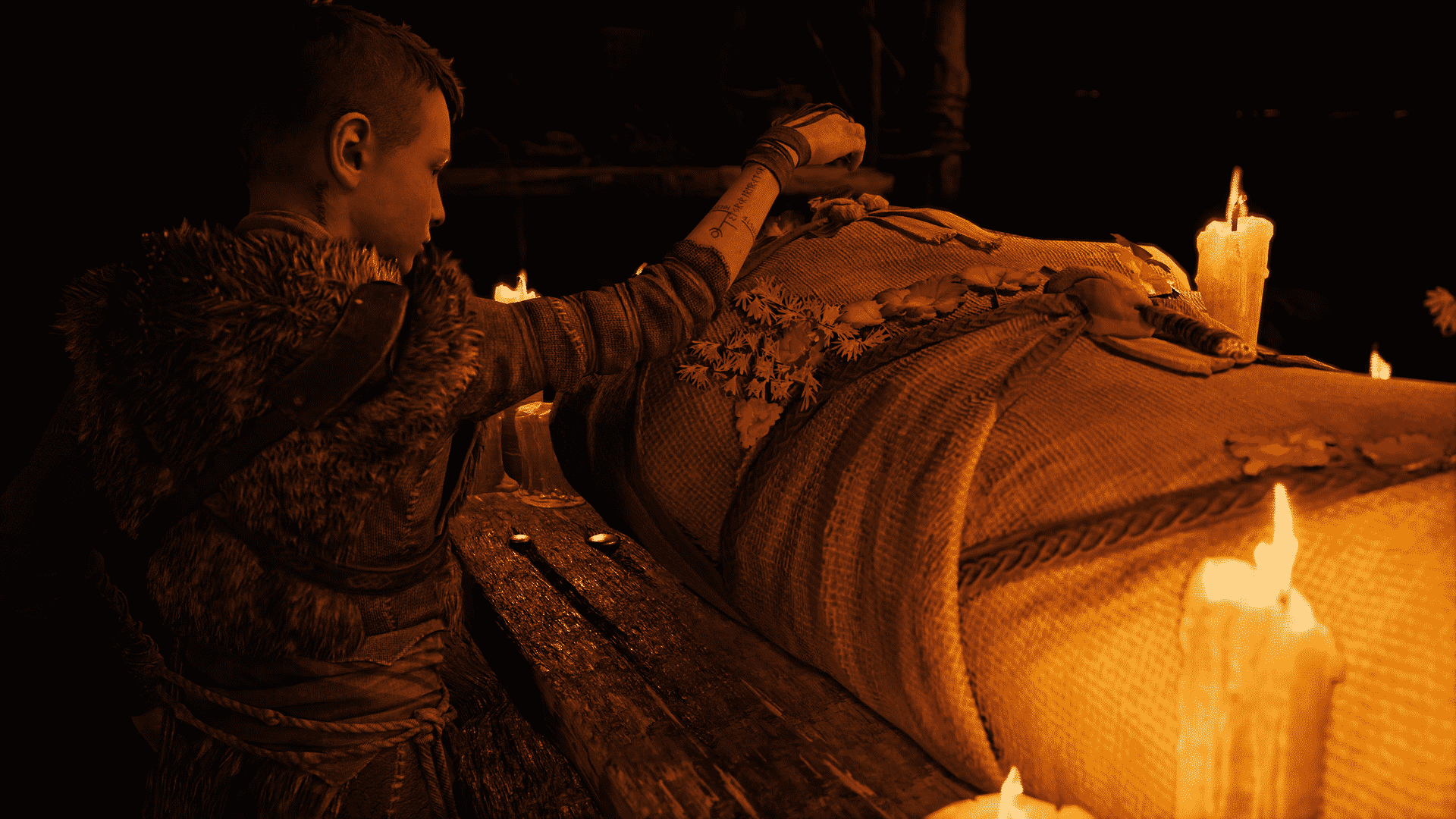
God of War on PC is the definitive version of a beloved game. This title pushed the PS4 to its limits when it came out. Anyone listening to their PS4 running the game at the time can attest to that. On PC, God of War is free to stretch its legs, delivering a markedly superior visual experience.
While this port lacks some of the more robust levels of graphical adjustments that are standard for PC, it makes up for it with the ability to run competently enough on hardware that is half a decade old. Sony Santa Monica’s inclusions of DLSS and FSR are welcome additions and demonstrate that they’re listening to the wants and needs of their new PC audience.
Kratos has smashed his way to PC in excellent form. This is a title worth experiencing or re-experiencing on PC. My only request is that a PS5 version of God of War be created with the many visual enhancements of the PC version carried over, as the PC now has the definitive version of God of War.




